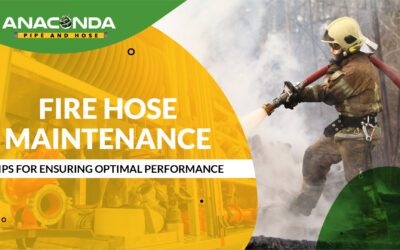Slurry Hoses in Dredging
Dredging is a vital process that plays a crucial role in various industries, from maintaining navigable waterways to extracting valuable minerals. At the heart of successful dredging operations lies the importance of efficient slurry discharge systems. Industrial slurry discharge hoses, in particular, are critical components that significantly impact the overall effectiveness of the dredging process. This article will delve into the critical aspects of slurry discharge hoses and highlight the specific characteristics that dredge operators should look for to ensure seamless and efficient dredging operations.
The Significance of Slurry Discharge Hoses in Dredging
Dredging involves removing sediments, debris, or minerals from the bottom of water bodies using specialized equipment such as dredgers. The extracted material, slurry, is a mixture of solids and water. Efficient disposal of this slurry is essential for maintaining the productivity and sustainability of dredging operations. This is where industrial slurry discharge hoses come into play.
High-quality slurry hoses are critical in ensuring industrial dredging projects’ efficiency, safety, and overall success. Industrial dredging involves the extraction of sediments, silt, or other materials from bodies of water, harbors, or channels for various purposes, such as navigation, environmental remediation, or resource extraction. The choice of slurry hose is paramount due to the harsh and demanding conditions these hoses must endure during dredging.
- Abrasion Resistance: One of the primary challenges in industrial dredging is the abrasive nature of the transported materials. High-quality slurry hoses are designed with very strong abrasion-resistant materials, often reinforced with hardened rubber or synthetic compounds. This resistance ensures the hose’s longevity, minimizing wear and tear even when abrasive particles are present.
- Corrosion Resistance: Dredging projects often involve exposure to corrosive materials in water bodies, such as saltwater or chemicals. A top-tier slurry hose is constructed with corrosion-resistant materials, including inner linings and outer covers, to withstand the corrosive effects over an extended service life.
- Pressure and Vacuum Ratings: Dredging operations require hoses that can handle high-pressure pumping of slurry and vacuum conditions during suction. High-quality slurry hoses are engineered to withstand these extreme pressure differentials, ensuring efficient material transport and preventing hose failures that could lead to downtime or safety hazards.
- Flexibility and Bend Radius: A slurry hose’s flexibility is crucial for navigating the often complex and dynamic dredging environments. Quality hoses are designed with a balance of flexibility and stiffness, allowing them to adapt to the contours of the waterbed or dredging area while maintaining structural integrity. A proper bend radius prevents kinking or collapsing, ensuring a continuous flow of slurry.
- Temperature Resistance: Dredging projects can expose equipment to a wide range of temperatures, from frigid waters to hot climates. High-quality slurry hoses are manufactured with materials that offer excellent temperature resistance, preventing degradation or loss of flexibility in extreme conditions.
- Coupling and Fitting Compatibility: Compatibility with various coupling and fitting systems is crucial for seamless integration into the dredging setup. Quality slurry hoses are designed to accommodate different connections, ensuring easy installation and compatibility with existing dredging equipment.
In conclusion, selecting high-quality slurry hoses for industrial dredging projects is essential to ensure durability, reliability, and overall effectiveness in handling the challenging conditions associated with the extraction and transportation of slurry materials. Investing in superior hoses minimizes operational disruptions and contributes to the longevity and safety of the dredging equipment and personnel involved in the project.






0 Comments